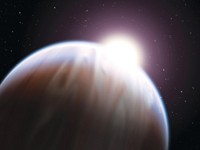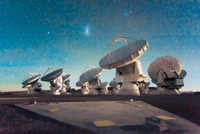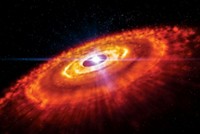Advertisement
Grab your lab coat. Let's get started
Welcome!
Welcome!
Create an account below to get 6 C&EN articles per month, receive newsletters and more - all free.
It seems this is your first time logging in online. Please enter the following information to continue.
As an ACS member you automatically get access to this site. All we need is few more details to create your reading experience.
Not you? Sign in with a different account.
Not you? Sign in with a different account.
ERROR 1
ERROR 1
ERROR 2
ERROR 2
ERROR 2
ERROR 2
ERROR 2
Password and Confirm password must match.
If you have an ACS member number, please enter it here so we can link this account to your membership. (optional)
ERROR 2
ACS values your privacy. By submitting your information, you are gaining access to C&EN and subscribing to our weekly newsletter. We use the information you provide to make your reading experience better, and we will never sell your data to third party members.
Analytical Chemistry
Planetary Science
Spectral band in Venus' 'nightglow' allows study of NO, O2
by Elizabeth K. Wilson
January 26, 2009
| A version of this story appeared in
Volume 87, Issue 4
With the discovery of an elusive band of infrared emissions spectra in Venus' atmosphere, astronomers now have a tool to monitor key species associated with "nightglow" in planetary environments.
Emissions from numerous chemical species create a pervasive atmospheric nightglow that surrounds Venus, as well as Earth and Mars. The glow is generated in part by ultraviolet emissions accompanying the recombination of nitrogen and oxygen to form nitric oxide.
Scientists have known from lab experiments that a characteristic group of near-IR emissions, which provide additional data, must also accompany the UV emissions created during NO production. But the near-IR emissions have been difficult to detect in planetary atmospheres.
Now, a sensitive instrument aboard the European Space Agency's Venus Express spacecraft has detected these near-IR emissions, which come not only from NO but also from molecular oxygen (Proc. Nat. Acad. Sci. USA, DOI: 10.1073/pnas.0808091106).
Antonio García Muñoz of Australian National University, in Canberra, and colleagues say this new realm of potential spectral exploration could prove profoundly useful to planetary scientists.
The researchers believe that the ability to observe near-IR spectra will make it possible to simultaneously monitor NO and O2 and their transport throughout the planet's atmosphere. This could "help refine global circulation models of the venusian atmosphere," notes Brian Sharpee, an astronomer at Stanford Research Institute, in Menlo Park, Calif.





Join the conversation
Contact the reporter
Submit a Letter to the Editor for publication
Engage with us on Twitter